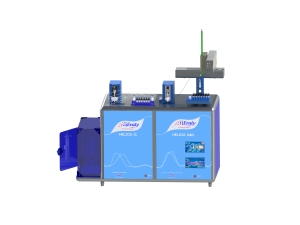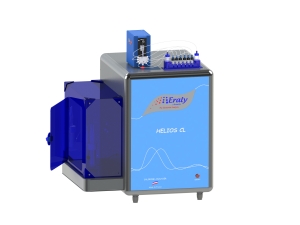International standards for total chlorine measurement
Eraly & Associés designs and manufactures analyzers and accessories that meet the performance criteria of international standards for Total Chlorine measurement in numerous compounds and products.
ASTM D4929
Standard Test Method for Determination of Organic Chloride Content in Crude Oil
Procedure B, oxidative combustion followed by microcoulometric titration.
ASTM D5194
Standard Test Method for Trace Chloride in Liquid Aromatic Hydrocarbons.
The test method is applicable to samples with chloride concentrations of 1 to 25 mg/kg.
Bromides and iodides, if present, will be calculated as chlorides.
ASTM D5808
Standard Test Method for Determining Chloride in Aromatic Hydrocarbons and Related Chemicals by Microcoulometry.
This test method is applicable to samples with chloride concentrations from 0.7 mg/kg to 25 mg/kg. The limit of detection (LOD) is 0.2 mg/kg and the limit of quantitation (LOQ) is 0.7 mg/kg.
ASTM D2384
Standard Test Methods for Traces of Volatile Chlorides in Butane-Butene Mixtures….WICKBOLD
ASTM D6721
Standard Test Method for Determination of Chlorine in Coal by Oxidative Hydrolysis Microcoulometry.
ISO 11480
Pulp, paper and board — Determination of total chlorine and organically bound chlorine.
It is applicable to all types of pulp, paper and board. The lower limit of the determination is about 20 mg/kg.
ISO 9562
Water quality - Determination of adsorbable organically bound halogens (AOX).
Organic samples containing chlorine, bromine and iodine (expressed as chloride) adsorbable on activated carbon in regular concentration of more than 10 µg/l in water.
Samples with chloride ion concentrations
inorganic less than 1 g/l.
UOP 779
This method is for determining chloride in liquid hydrocarbons at concentrations ranging from approximately 0.3 to 1000 ppm.
Higher concentrations can be determined with appropriate sample dilution. The method determines the total organic chloride. Some inorganic chloride present as salts is not included.
Except for fluoride, other halogens that may be present in the sample are determined as chloride.
Both nitrogen and sulfur compounds interfere at concentrations greater than approximately 0.1%.
UOP 910
This method is for determining total chloride in gaseous hydrocarbons or liquefied petroleum gas (LPG) by Microcoulometry, at concentrations ranging from approximately 1 to 1000 ng/mL for gas or mass-ppm (µg/g) for LPG.
Except for fluoride, other halogens present are calculated as chloride. Chloride cannot be determined quantitatively if sulfur is present at concentrations greater than approximately 1 mass-%.




